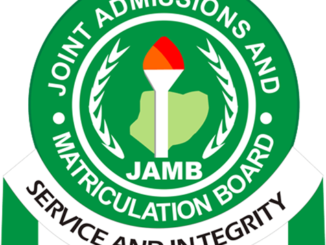Biology Questions for Jamb cbt 2024 (Here are 50 biology questions along with answers)

1. What is the powerhouse of the cell?
a) Nucleus
b) Golgi apparatus
c) Mitochondria (Answer)
d) Endoplasmic reticulum
2. Which organelle is responsible for protein synthesis?
a) Golgi apparatus
b) Ribosome (Answer)
c) Lysosome
d) Peroxisome
3. What is the basic unit of heredity?
a) Protein
b) Gene (Answer)
c) Enzyme
d) Carbohydrate
4. What is the process by which green plants make their food?
a) Photosynthesis (Answer)
b) Respiration
c) Digestion
d) Fermentation
5. Which of the following is not a function of the liver?
a) Detoxification
b) Carbohydrate storage
c) Protein synthesis
d) Hormone secretion (Answer)
6. Which blood type is known as the universal donor?
a) Type A
b) Type AB
c) Type O (Answer)
d) Type B
7. Which hormone is responsible for regulating blood sugar levels?
a) Insulin (Answer)
b) Estrogen
c) Testosterone
d) Thyroxine
8. Which of the following is an example of a renewable resource?
a) Coal
b) Natural gas
c) Wind (Answer)
d) Petroleum
9. Which of the following is a greenhouse gas?
a) Nitrogen
b) Oxygen
c) Carbon dioxide (Answer)
d) Hydrogen
10. What is the primary function of the respiratory system?
a) Transporting oxygen
b) Excreting waste
c) Breathing (Answer)
d) Digesting food
11. Which gas is produced during cellular respiration?
a) Oxygen
b) Carbon dioxide (Answer)
c) Nitrogen
d) Hydrogen
12. Which part of the brain controls balance and coordination?
a) Cerebrum
b) Cerebellum (Answer)
c) Brainstem
d) Hypothalamus
13. What is the largest organ in the human body?
a) Liver (Answer)
b) Brain
c) Skin
d) Heart
14. Which of the following is not a function of the skeletal system?
a) Protecting internal organs
b) Producing blood cells
c) Controlling body temperature
d) Producing hormones (Answer)
15. What is the function of white blood cells?
a) Transporting oxygen
b) Fighting infection (Answer)
c) Carrying nutrients
d) Clotting blood
16. What is the purpose of the circulatory system?
a) Transportation of gases, nutrients, and waste products (Answer)
b) Maintaining body temperature
c) Regulating hormones
d) Providing structural support
17. What is the role of DNA in cells?
a) Providing energy
b) Storing genetic information (Answer)
c) Breaking down waste
d) Regulating cell growth
18. Which of the following is not a function of the immune system?
a) Fighting infections
b) Regulating body temperature
c) Removing damaged cells
d) Producing hormones (Answer)
19. What is the purpose of the endocrine system?
a) Controlling movement
b) Regulating metabolism, growth, and development (Answer)
c) Excreting waste
d) Digesting food
20. Which of the following is not a component of blood?
a) Platelets
b) Plasma
c) Hormones
d) Bone marrow (Answer)
21. What is the process by which plants release water vapor into the atmosphere?
a) Transpiration (Answer)
b) Respiration
c) Photosynthesis
d) Germination
22. Which of the following is not a characteristic of living organisms?
a) Growth and development
b) Response to stimuli
c) Ability to reproduce
d) Inorganic composition (Answer)
23. What is the process by which cells divide to produce new cells?
a) Replication
b) Mitosis (Answer)
c) Meiosis
d) Fertilization
24. What is the main function of the kidneys?
a) Regulating blood sugar levels
b) Filtering waste from the blood (Answer)
c) Producing hormones
d) Digesting food
25. What is the role of chlorophyll in photosynthesis?
a) Absorbing carbon dioxide
b) Absorbing sunlight (Answer)
c) Releasing oxygen
d) Breaking down glucose
26. Which of the following is not a type of muscle tissue?
a) Skeletal
b) Cardiac
c) Adipose
d) Smooth (Answer)
27. What is the function of the pancreas in the digestive system?
a) Producing bile
b) Absorbing nutrients
c) Producing digestive enzymes (Answer)
d) Storing food
28. What is the role of the myelin sheath in nerve cells?
a) Speeding up the transmission of nerve impulses (Answer)
b) Protecting the cell from damage
c) Regulating hormone levels
d) Providing structural support
29. Which of the following is not a type of symbiotic relationship?
a) Mutualism
b) Parasitism
c) Predation
d) Commensalism (Answer)
30. What is the role of ATP in cellular metabolism?
a) Storing genetic information
b) Providing energy (Answer)
c) Regulating cell growth
d) Breaking down waste products
31. What is the function of the ribosomes in the cell?
a) Producing energy
b) Synthesizing proteins (Answer)
c) Packaging molecules for export
d) Breaking down waste
32. What is the process by which organisms maintain a stable internal environment?
a) Homeostasis (Answer)
b) Respiration
c) Reproduction
d) Evolution
33. Which of the following is not a type of passive transport?
a) Diffusion
b) Osmosis
c) Active transport (Answer)
d) Facilitated diffusion
34. What is the role of hemoglobin in the blood?
a) Fighting infections
b) Transporting oxygen (Answer)
c) Clotting blood
d) Breaking down toxins
35. What is the function of the thymus gland in the immune system?
a) Producing antibodies
b) Filtering toxins from the blood
c) Maturation of T cells (Answer)
d) Regulating body temperature
36. What is the role of RNA in protein synthesis?
a) Storing genetic information
b) Acting as a template for DNA replication
c) Carrying amino acids to the ribosome (Answer)
d) Regulating gene expression
37. What is the primary function of the stomata in plant leaves?
a) Absorbing water
b) Exchanging gases (Answer)
c) Storing nutrients
d) Producing sugars
38. Which of the following is not a function of the nervous system?
a) Controlling body movements
b) Regulating hormone levels
c) Processing sensory information (Answer)
d) Learning and memory
39. What is the role of the Golgi apparatus in the cell?
a) Protein synthesis
b) Energy production
c) Packaging and shipping proteins (Answer)
d) DNA replication
40. What is the function of the hypothalamus in the brain?
a) Regulating body temperature
b) Controlling hunger and thirst
c) Maintaining homeostasis (Answer)
d) All of the above
41. Which of the following is a function of the smooth endoplasmic reticulum?
a) Protein synthesis
b) Lipid synthesis (Answer)
c) Energy production
d) Waste disposal
42. What is the role of the gallbladder in the digestive system?
a) Producing bile
b) Storing bile (Answer)
c) Digesting carbohydrates
d) Absorbing nutrients
43. What is the function of the centrioles in animal cells?
a) Protein synthesis
b) Cell division (Answer)
c) Energy production
d) Waste disposal
44. What is the process by which water moves across a semipermeable membrane?
a) Osmosis (Answer)
b) Diffusion
c) Active transport
d) Facilitated diffusion
45. Which of the following is not a type of tissue in the human body?
a) Epithelial
b) Connective
c) Nervous
d) Cardiac (Answer)
46. What is the function of the adrenal glands?
a) Producing insulin
b) Regulating blood pressure
c) Producing hormones like adrenaline (Answer)
d) Digesting food
47. What is the role of the mucus membrane in the respiratory system?
a) Filtering air
b) Producing mucus to trap pathogens (Answer)
c) Exchange of gases
d) Protection from UV radiation
48. Which of the following is not a type of mutation?
a) Insertion
b) Deletion
c) Translation
d) Substitution (Answer)
49. What is the function of the mitochondria in the cell?
a) Protein synthesis
b) Energy production (Answer)
c) Storage of genetic information
d) Waste disposal
50. Which of the following is not a component of the scientific method?
a) Hypothesis
b) Conclusion
c) Opinion
d) Experimentation (Answer)
I hope these questions help you prepare for your biology exam! Let me know if you need further assistance. however you can subscribe for our Jamb Support here if you want to score 300
Biology Questions for Jamb CBT 2024





Thanks ever so much for these biology exam questions,i’m interested and welling to study not only for the exam but for rest of life.
Thanks ever so much for these biology exam questions,i’m interested and welling to study not only for the exam but for rest of life.
Thanks
Thanks
Thanks so much, I really appreciate you
Thanks so much, I really appreciate you
PLEASE!!!
PLEASE!!!
ON.L
ON.L
Thank
This is nice ,I love the exam
Thank
This is nice ,I love the exam
Thanks it really helped
Thanks it really helped
Thanks
Thanks
Nice one
Nice one
Thanks it really helped me
Thanks it really helped me
Thanks alot,this mediud was really helpful to me.
Thanks alot,this mediud was really helpful to me.
Thanks alot,this medium was really helpful to me.
Thanks alot,this medium was really helpful to me.
Thanks for this i appreciate
Thanks for this i appreciate
Thanks alot this media was really helpful to me
Thanks alot this media was really helpful to me
Tnks alot for. the question
Tnks alot for. the question
thank you
very much may Allah reward
thank you
very much may Allah reward
thank you very much may Allah reward
thank you very much may Allah reward
Thank you so much, God bless you